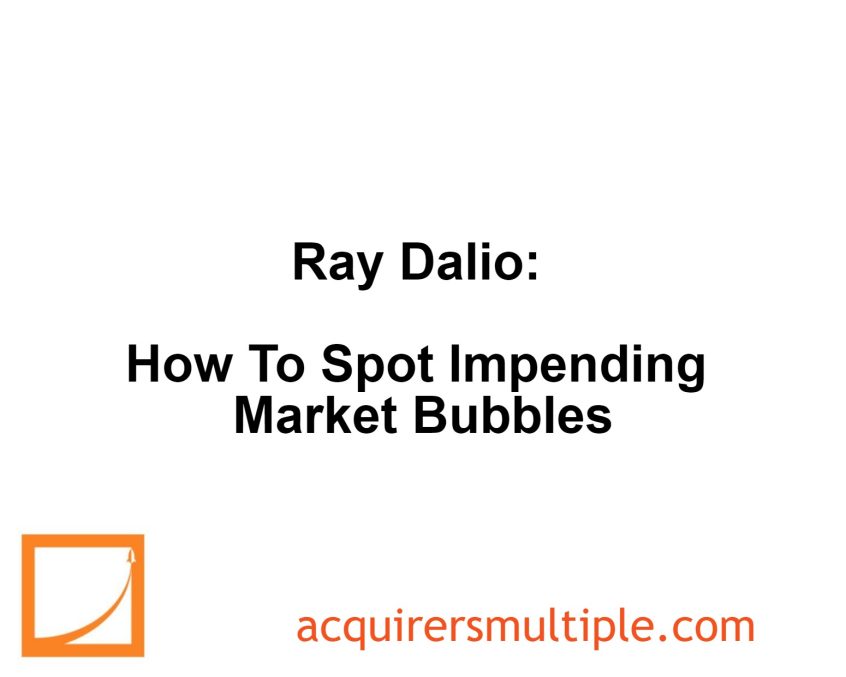In his book –
Here’s an excerpt from the book:
While the particulars may differ across cases (e.g., the size of the bubble; whether it’s in stocks, housing, or some other asset; how exactly the bubble pops; and so on), the many cases of bubbles are much more similar than they are different, and each is a result of logical cause-and-effect relationships that can be studied and understood. If one holds a strong mental map of how bubbles form, it becomes much easier to identify them.
To identify a big debt crisis before it occurs, I look at all the big markets and see which, if any, are in bubbles. Then I look at what’s connected to them that would be affected when they pop. While I won’t go into exactly how it works here, the most defining characteristics of bubbles that can be measured are:
1) Prices are high relative to traditional measures
2) Prices are discounting future rapid price appreciation from these high levels
3) There is broad bullish sentiment
4) Purchases are being financed by high leverage
5) Buyers have made exceptionally extended forward purchases (e.g., built inventory, contracted for supplies, etc.) to speculate or to protect themselves against future price gains
6) New buyers (i.e., those who weren’t previously in the market) have entered the market
7) Stimulative monetary policy threatens to inflate the bubble even more (and tight policy to cause its popping)”
You can find a copy of the book here:
For all the latest news and podcasts, join our free newsletter here.
Don’t forget to check out our FREE Large Cap 1000 – Stock Screener, here at The Acquirer’s Multiple:



